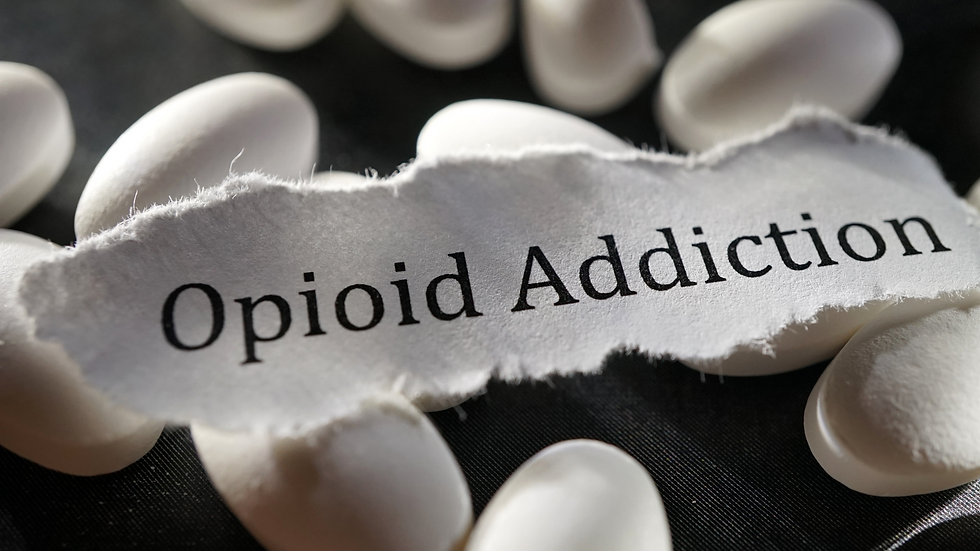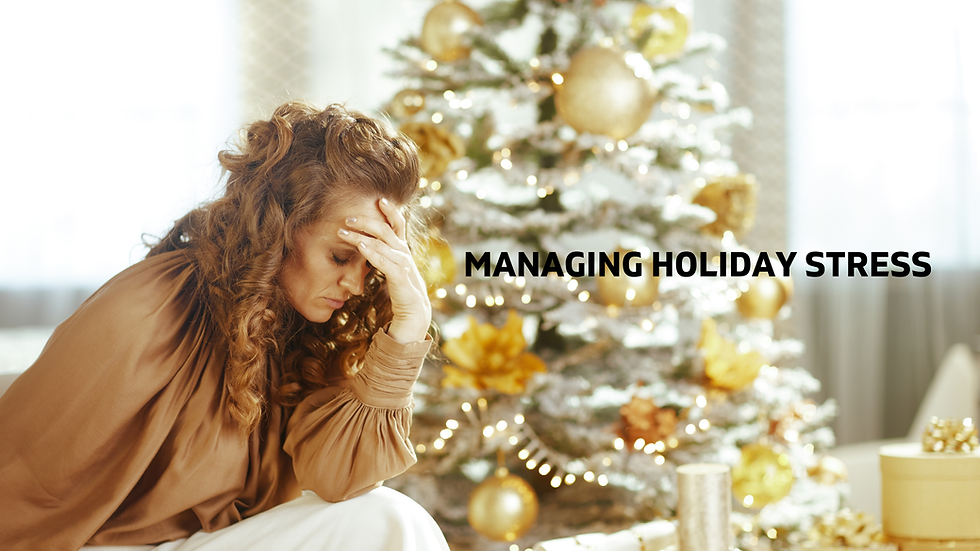Understanding Opioids & Addiction
- Dr. Eric Carlsen
- Aug 31, 2021
- 4 min read

Why do people become addicted to opioids?
Opioids can make your brain and body believe the drug is necessary for survival. As you learn to tolerate the dose you’ve been prescribed, you may find that you need even more medication to relieve the pain or achieve well-being, which can lead to dependency. Addiction takes hold of our brains in several ways — and is far more complex and less forgiving than many people realize.
How can you avoid addiction to opioids?
If you or a loved one is considering taking opioids to manage pain, it is vital to talk to a physician anesthesiologist, or other pain medicine specialist about using them safely and exploring alternative options if needed. Learn how to work with your physician anesthesiologist or another physician to use opioids more wisely and safely and explore what pain management alternatives might work for you.
What are the signs of an addiction?
People addicted to drugs may change their behavior. Possible signs include:
Mixing with different groups of people or changing friends
Spending time alone and avoiding time with family and friends
Losing interest in activities
Not bathing, changing clothes, or brushing their teeth
Being very tired and sad
Eating more or less than usual
Being overly energetic, talking fast, and saying things that don’t make sense
Being nervous or cranky
Quickly changing moods
Sleeping at odd hours
Missing important appointments
Getting into trouble with the law
Attending work or school on an erratic schedule
Experiencing financial hardship
What should you do if you or someone you know is addicted?
If you or a loved one is ready to seek help for an addiction, the first step is to find a physician or other health professional who can help. Ask your physician for a referral to a medical professional in addiction medicine.
If you are supporting a friend or loved one in overcoming addiction, the National Institute on Drug Abuse offers the following advice: Assure your friend or loved one that addiction can be managed successfully but acknowledge that it may take several attempts at treatment to find the best approach. If your friend or loved one refuses to seek help, a confrontational “intervention” is not recommended. These encounters can escalate into violence or backfire in other ways. Try to convince the person to consult with a physician.
What are opioid withdrawal symptoms and how can you alleviate them?
Opioid withdrawal symptoms can but won’t necessarily include some of the following:
Drug cravings
Anxiety/irritability
Insomnia
Abdominal pain
Vomiting
Diarrhea
Tremors (shaking)
Feeling cold
Opioid withdrawal symptoms generally last between three and five days, although they can last up to 10 days, according to the American Society of Addiction Medicine (ASAM).
Withdrawal from opioids can be difficult and even dangerous. Trying to quit “cold turkey” is not recommended, ASAM advises because it can lead to stronger cravings and continued use. The safest way to alleviate opioid withdrawal symptoms is through medically supervised treatment that generally includes medicines, counseling, and support. Some medications used to relieve withdrawal symptoms are methadone and buprenorphine (Subutex). These medications also can be used as long-term maintenance medicine for opioid dependence. In addition, a medication called clonidine can be used during withdrawal to help reduce anxiety, agitation, muscle aches, sweating, runny nose, and cramping. It does not help reduce cravings. The addiction medicine physician may also prescribe medication to treat vomiting and diarrhea and help with insomnia.
What are the symptoms of an opioid overdose?
Signs of an overdose include:
Slow, shallow breathing
Extreme sleepiness
Inability to talk
Blue skin color and dark-colored lips
Snoring or gurgling sounds
How should you respond to an opioid overdose?
If you think someone may be experiencing an opioid overdose, take the following actions immediately:
Lightly tap, shake and shout at the person to get a response. If you do not get a response, rub your knuckles on the person’s breastbone.
If the individual responds, keep the person awake.
Call 911.
How should you store and dispose of opioids to protect family members?
If you are taking opioids, you are not the only one in your household who is in danger of misuse, addiction, and overdose. Other members of your household, including children, also are vulnerable. Here’s how to protect them:
Always store opioids in a safe and secure place. Do not leave prescription bottles in the medicine cabinet, and keep the medication away from others, particularly young children. Children sometimes confuse medications for candy and end up swallowing them, which can lead to overdose. Other family members and visitors could also find prescription medications in the house and use them inappropriately.
Never share your prescriptions. More than half of people who misuse prescribed opioids get them from a friend or relative, according to the Substance Abuse and Mental Health Services Administration.
Don’t throw unused opioids in the trash. Improper disposal of prescription medicines can lead to other people finding and taking them.
If you have leftover or expired prescription medications, follow these drug disposal tips:
Remove the prescription label that contains your name and other identifying information.
Check with your municipal trash and recycling program providers about approved disposal drop-off options in your community, such as police stations.
Look for pharmacies and health care clinics that provide drop-off boxes or sell specially designed drug disposal envelopes that you can seal and mail to an approved facility.
Flush the medication down the toilet or mix it with dirt, kitty litter, or coffee grounds before throwing it in the garbage.
Credit: excerpts from “When seconds count”




Chiropractic approaches wellbeing from the back to front by getting to our body's innate insight to keep up with our wellbeing from the inside. Well Connected Chiropractic Reviews Similarly as our inalienable knowledge realizes how to make the body, it likewise realizes how to mend the body.